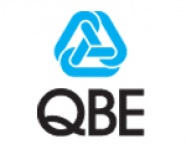Managing noise in the workplace

Authored by QBE Senior Risk Manager Nick Fox
As with many occupational diseases, hearing damage may not be discovered until a later date when it may be too late to prevent further harm. To some organisations, this is a barrier to identifying any poor practice in managing noise risks, and they may continue to rely on personal hearing protection rather than implementing practical and sustainable controls.
The Control of Noise at Work Regulations 2005
This regulation requires employers to eliminate or minimise risks from noise to prevent workers from suffering from hearing damage and other harm.
It is also required that engineering, technical and organisational solutions are in place, with a noise risk assessment completed and up to date with any significant findings recorded. The important aspects of this assessment are to identify and analyse where there are noise problems and who might be affected and to identify possible solutions such as:
- Industry standard control measures
- A range from ‘hard’ engineering to ‘soft’ organisational measures
- Consultations with machinery suppliers and noise control engineering specialists
- Keeping up to date with new technology
- Devise a plan to execute the actions identified with both short and long term aims
What can businesses do to reduce the risk?
Noise risk management programmes
A well-designed and managed system of noise risk management, based on a prioritised action plan of technical, engineering and organisational controls is key. It does not have to be expensive or complicated and can add real value to a business’s culture, reputation, legal compliance and the defence of potential future claims.
A common cause of failure for some organisations is ensuring that the control of risks is sustained. This can be achieved by well-designed systems that employees understand. Systems relating to noise management should include processes for ongoing preventative maintenance of noise control equipment.
Personal hearing protection
Generally, hearing protection falls into two main categories, earmuffs and ear plugs, which can be effective. The most important factor is ensuring employees use protection properly throughout the whole required duration.
Businesses often underestimate the supervisory and training burden required to ensure that protectors work each time they’re used. It also requires personal motivation from employees which is often why hearing protection is at the bottom of the ‘control hierarchy’.
Training
Training of workers is required to inform them of the level of risk to which they are exposed, to let them know what you are doing to protect them and to get their buy-in in relation to the systems and procedures you implement. They also need to know how, where and why they should use hearing protection if necessary.
Risk management services for QBE customers
QBE helps businesses build resilience through risk management and insurance.
Depending upon the size and complexity of the business needs, QBE customers can access a wide range of risk management services, self-assessment questionnaires and risk management toolkits which are focused on the key causes of claims, and on generating action plans for improved outcomes - including protecting employees, reducing risk and making claims less likely. You can find out more about how QBE helps businesses to manage risk here.
Downloads
About QBE
QBE European Operations is part of QBE Insurance Group, one of the world’s leading international insurers and reinsurers and Standard & Poor’s A+ rated. Listed on the Australian Securities Exchange, QBE’s gross written premium for the year ended 31 December 2018 was US$13.7 billion.
As a business insurance specialist, QBE European Operations offers a range of insurance products from the standard suite of property, casualty and motor to the specialist financial lines, marine and energy. All are tailored to the individual needs of our small, medium and large client base.
We understand the crucial role that effective risk management plays in all organisations and work hard to understand our clients’ businesses so that we offer insurance solutions that meet their needs – from complex programmes to simpler e-trading solutions – and support them in minimising their risk exposures. Our expert risk management and rehabilitation practitioners focus on helping clients improve their risk management so that they may benefit from a reduction in claims frequency and costs.

